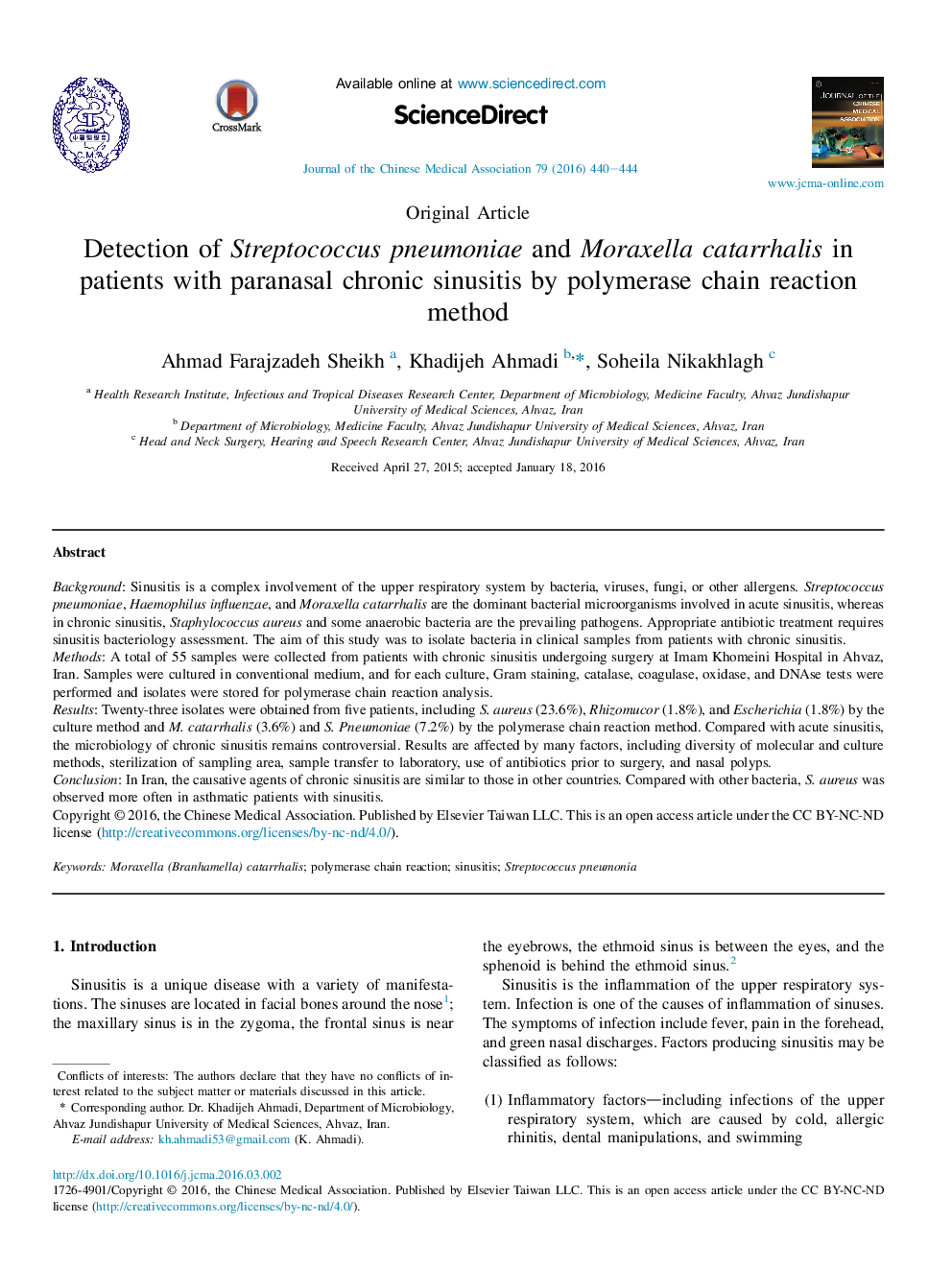| Article ID | Journal | Published Year | Pages | File Type |
|---|---|---|---|---|
| 3475764 | Journal of the Chinese Medical Association | 2016 | 5 Pages |
BackgroundSinusitis is a complex involvement of the upper respiratory system by bacteria, viruses, fungi, or other allergens. Streptococcus pneumoniae, Haemophilus influenzae, and Moraxella catarrhalis are the dominant bacterial microorganisms involved in acute sinusitis, whereas in chronic sinusitis, Staphylococcus aureus and some anaerobic bacteria are the prevailing pathogens. Appropriate antibiotic treatment requires sinusitis bacteriology assessment. The aim of this study was to isolate bacteria in clinical samples from patients with chronic sinusitis.MethodsA total of 55 samples were collected from patients with chronic sinusitis undergoing surgery at Imam Khomeini Hospital in Ahvaz, Iran. Samples were cultured in conventional medium, and for each culture, Gram staining, catalase, coagulase, oxidase, and DNAse tests were performed and isolates were stored for polymerase chain reaction analysis.ResultsTwenty-three isolates were obtained from five patients, including S. aureus (23.6%), Rhizomucor (1.8%), and Escherichia (1.8%) by the culture method and M. catarrhalis (3.6%) and S. Pneumoniae (7.2%) by the polymerase chain reaction method. Compared with acute sinusitis, the microbiology of chronic sinusitis remains controversial. Results are affected by many factors, including diversity of molecular and culture methods, sterilization of sampling area, sample transfer to laboratory, use of antibiotics prior to surgery, and nasal polyps.ConclusionIn Iran, the causative agents of chronic sinusitis are similar to those in other countries. Compared with other bacteria, S. aureus was observed more often in asthmatic patients with sinusitis.
